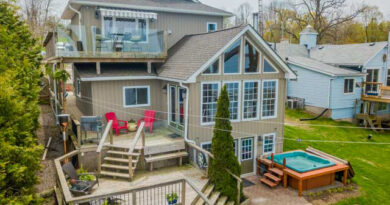How to Prepare Your Home for Winter
The Farmers’ Almanac forecast for the winter of 2024-2025 suggests that Canadians should brace for a particularly challenging season. PKHBA wants to make sure you and your home are well prepared for a “Wet Winter Whirlwind”. Preparing your house for the winter season is crucial to ensure your comfort, safety, and energy efficiency during the colder months. Here’s how to get your home winter-ready.
1. HVAC Maintenance:
Your heating system is critical during the winter months. Building science emphasizes the importance of regular HVAC maintenance to ensure efficiency. Replace filters, clean ducts, and consider upgrading to a programmable thermostat to better manage indoor temperatures. For homes with older heating systems, an energy-efficient furnace or heat pump might be a worthy investment. Heat pumps work best in airtight homes and have a minimum operating temperature between -15°C to -25°C, requiring back up heating on the coldest days.
2. Insulation and Air Sealing:
Effective insulation is the cornerstone of a winter-ready home. When temperatures plummet the building envelope—the barrier between the indoor and outdoor environment—needs to be well-insulated. Focus on your attic, walls, and basement. In the basement, check the areas around the foundation walls and rim joists. Proper insulation prevents heat loss, which is critical in maintaining a comfortable indoor temperature and reducing energy consumption. However, insulation works best when combined with air sealing. Even small gaps around windows, doors, and in the building envelope can lead to significant heat loss. Use caulking, spray foam, and weatherstripping to seal these leaks and ensure a tight building envelope. The more airtight your home is, the less leakage there is for naturally occurring gasses such as radon. When your house is sealed, test for radon.
3. Window and Door Upgrades:
Windows and doors are often the weakest points in the building envelope when it comes to thermal performance. Double or triple-pane windows with low-emissivity (low-E) coatings can significantly improve thermal insulation, reducing heat loss and minimizing condensation. If replacing windows isn’t feasible, consider adding storm windows or using thermal window film as an alternative. Since all openings are part of the building envelope ensure windows are installed properly with good weather stripping, sill pans and caulking.
4. Moisture Control:
Winter can bring about moisture issues due to the contrast between warm indoor air and cold outdoor temperatures. This can lead to condensation on windows and in poorly insulated walls, which may cause mold growth and structural damage over time. Installing a high-quality vapour barrier on the warm side of the insulation helps control moisture levels. It is important to have space for moisture and water to exit within the different planes of protection in the building envelope.
5. Roof and Gutter Care:
Snow accumulation on your roof can lead to ice dams, which form when warm air from the attic melts the snow on the roof, causing water to refreeze at the eaves. This can result in water infiltration into your home. Proper insulation and ventilation in the attic are essential to prevent ice dams. Always make sure that gutters are clear of debris so that melting snow can drain properly.
By taking these steps, you can keep your home warm, safe, and energy-efficient throughout the Canadian winter. If you are looking for someone to get your home winter ready go to PKHBA.com to see our Member Directory and hire a professional.




